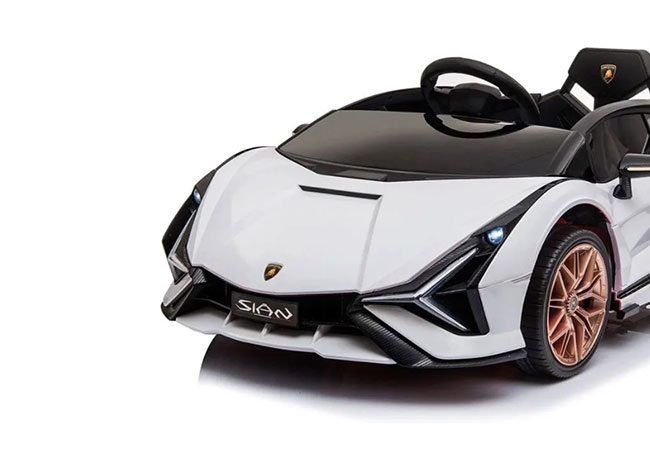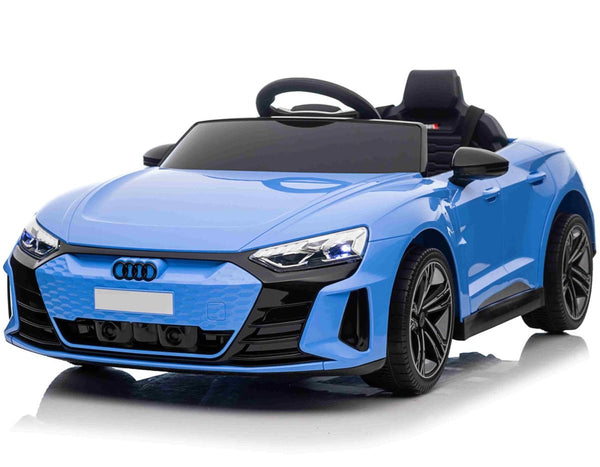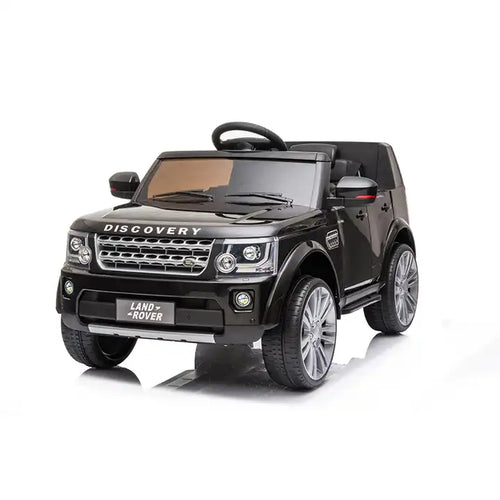New Ideas On Selecting Remote Control Childrens Cars
Wiki Article
What Should I Know About Battery Life & Charging Time For An Electric Ride-On Kid's Car?
It is important to understand the battery life of your electronic ride-on car for children and the time it takes to charge. This will guarantee that you get uninterrupted playtime. Here's the information you need - Type of Battery
Children's electric cars can be recharged, and usually utilize lithium-ion battery or lead-acid battery. Lithium ion batteries have a longer battery life than lead-acid batteries and charge more quickly.
Capacity of Battery
The operating duration of the ride-on vehicle is dependent on the battery's capacity. It is measured in amp-hours, or watt-hours. Larger capacity batteries provide more duration between recharges.
Run Time -
The run time of the electric ride-on car is referred to the amount of time it is able to operate continuously on a single charge. This is contingent on a range of variables that include the motor, the battery, the terrain, and the weight of the rider.
The typical run time for electric ride-ons is between 30 to 2 hours. Nevertheless, high-capacity lithium batteries can offer longer running times.
Charge Time
The charging time is the time it takes to completely recharge the battery after it is depleted. The time to charge is based on the specifications of the charger as well as the battery's capacity, and the charging method.
The average charging time of electric ride-on vehicles is between 8 and 12 hours. Certain models could offer faster charging times, especially with lithium-ion batteries.
The battery's security and longevity can be ensured by adhering to the manufacturer's charging recommendations. The performance of the battery and its longevity could be affected negatively when it is overcharged or undercharging it.
Charging Method
Electric ride-on cars usually come with a charger that plugs into a standard outlet for homes. Some models come with fast-charging features or a smart charger which examines the status of the battery and adjusts charging rates according to the condition.
To ensure that there is no damage to the electrical system or battery make sure that the charging connector and port you are using are compatible with chargers provided with your ride-on vehicle.
Additional Batteries
Some ride-on electric vehicles will permit you to purchase additional batteries or spares for a longer time of play. Additional batteries let you replace depleted batteries by fully charged batteries, which reduces the time spent in the car.
Being aware of the life span of your electric kids' ride-on car as well as its charging times will enable you to ensure that your child enjoys thrilling and enjoyable adventures as they explore their world. Regularly charging the battery, and following proper charging practices will help increase the battery's life and performance. Take a look at the best remote control childrens cars for site info including childs car toy, toy car, cars pedal car, toy cars toy car, childs electric ride on car, car toy car toy, ride on car, ride of car, ride on car, two seater electric cars and more. .

How Do You Keep And Put Together A Child's Ride-On Vehicle?
For optimal performance, safety and long-term durability kids' ride-on vehicles require some assembly. Here are the common maintenance and assembly requirements for children's ride-on cars.
The majority of ride-on vehicles arrive in partially assembled condition and require assembling upon arrival. Connecting the parts like wheels, steering wheels, and seats, in accordance with the manufacturer’s instructions, is a common practice.
Assemble the parts according to the directions. Use the tools and other equipment to complete the assembly.
Cleaning
To keep your vehicle in good condition and functioning effectively, it's essential to keep it clean. Make use of a soft sponge or cloth soaked in water and mild soap to wash the exterior surfaces.
Be aware of areas that are prone for accumulation such as the tires or wheels, as well as the undercarriage. Utilize a toothbrush or brush to scrub hard-to-access areas and remove stubborn grime.
Avoid using harsh chemical cleaners, abrasive chemicals, or high-pressure water sprays because they can harm the electronic or paint parts of the ride-on vehicle.
Battery Care –
To ensure performance and prolong the life of a battery that is a ride-on, it is crucial to take good care of the battery. Follow these tips for caring for your battery -
Fully charge the battery before and after each use to extend the runtime.
Beware of overcharging the battery or leaving the battery hooked to the charger for extended periods, as this can damage the battery and reduce its life span.
Keep the ride-on vehicle and battery in a cool, dry place when not in use and away from direct sunlight or extreme temperatures.
If necessary you need to clean the terminals, use an appropriate wire brush or terminal cleaner when they are corroded.
Replace the battery if it isn't holding a charge anymore or shows signs that it has been damaged or damaged.
Tire Maintenance -
Regularly inspect the tires to check for signs like wear, damage or loss of pressure. The tires can be inflated to the level recommended by with a bicycle or an air compressor.
Examine the tread pattern to determine whether there are any foreign objects or particles that could cause flats or punctures. Replace worn tires and clear any obstructions.
Lubricate wheel bearings and axles on a regular basis to decrease friction.
Repair or replace parts as needed -
Wear and tear or even accidental damage could cause ride-on car parts to need replacement or repair.
Watch out for signs of deterioration or malfunction like unusual sounds, loss of power, or unusual behavior. Check the instructions of the manufacturer or call Customer Support for assistance in troubleshooting.
To avoid further damage, replace damaged or worn-out parts as soon as possible to ensure the safety of your equipment and its functionality.
You can make sure your child's rideon car is in good working order by adhering to these assembly and maintenance guidelines. Your child will enjoy endless hours of safe, fun and exciting time. Read the most popular read this for kids ride on cars for site examples including kidscars, digger ride, two seater childrens electric cars, kidscars, race car toy, toy cars, two seater childrens electric cars, two seater electric cars, ride ons, kiddies cars and more. .

How Do I Determine The Cost Of My Child's Ride-On Car?
The process of budgeting for a ride-on vehicle for your child involves taking into account many factors such as the features, durability, and longevity. You should also consider your financial status. How do you establish an amount for your ride-on car and ensure you get the most value for your money Consider researching average prices
Begin by researching the typical costs of the ride-on cars for kids with the features you'd like. Toy stores, online retailers, and manufacturer websites can provide pricing information for different types of models.
Find out the features you need -
Consider the features that are essential to your child's safety as well as enjoyment. Ride-on cars that have features like realistic sounds seats, seat belts, remote control, and functioning headlights may cost more.
Prioritize features according to your child's preferences and financial budget.
Take into consideration durability and length of Life
Ride-on cars should be made of durable materials, like plastics and metals. They must also be able to withstand the elements.
To get a better understanding of the durability and longevity review the product or seek out suggestions from other parents. A large upfront investment of than a few hundred dollars in a top-quality ride-on vehicle can result in savings in the long run through avoiding repair and replacement.
Compare prices from different retailers
Check prices around and get the best value. Check for sales and discounts at local department stores, toy stores and online retailers.
You can save money by keeping an an eye on sales, clearances, and discounts.
Add Costs to Additional Costs
You should also think about any other costs that might be associated with purchasing a kid's ride-on car. These could include the cost of shipping, taxes, or even accessories, like spare batteries and safety gear.
Plan your budget accordingly so that you are able to afford the entire cost of ownership, including any accessories that are required or maintenance costs.
Set a Budget that Is Realistic
Make a budget plan that is sensible and reflects your priorities and needs. Consider durability, features and long-term use when determining your maximum budget for a ride-on car.
Avoid stretching your budget too thin, or overspending on unnecessary equipment that won't add any worth to your child's play experience.
Be aware of the value over time -
Evaluate the long-term value of the ride-on kid's car by looking at its longevity, versatility, and ability to adapt alongside your child. Making the investment in a top-quality and feature-rich vehicle could bring more value over time as in comparison to less expensive, less robust alternatives.
If you establish a sensible budget and carefully compare the quality, features, and long-term value of every car that your child rides in, you will find that it is worth your money. Prioritize features that are important for your child's safety and enjoyment, while keeping your budget in mind. Follow the most popular remote control childrens cars kidscars.co.uk advice for site recommendations including childrens electric cars, ride a toy, two seater childrens electric cars, 2 seater electric cars, childrens electric cars, car toy toy, electric two seater cars, ride a toy, toy cars, race car toy and more. .
